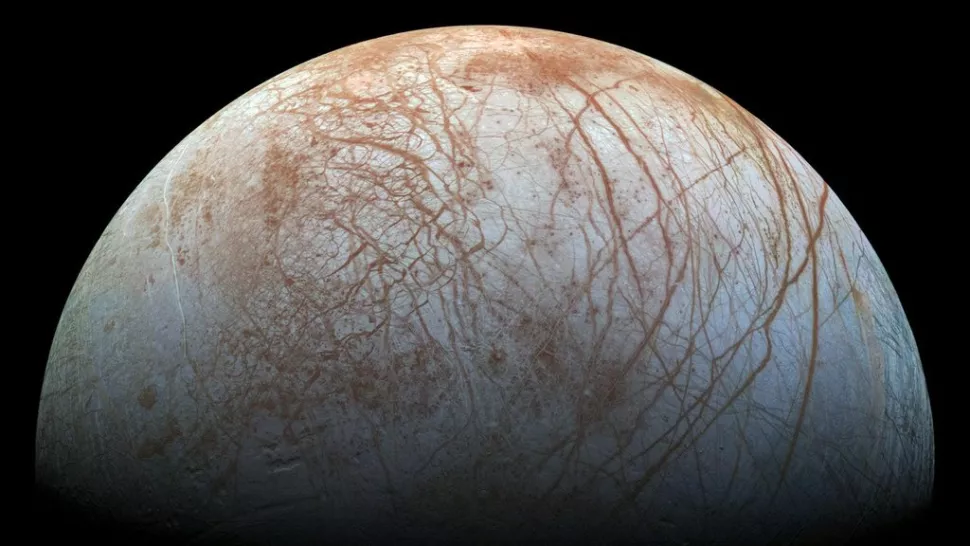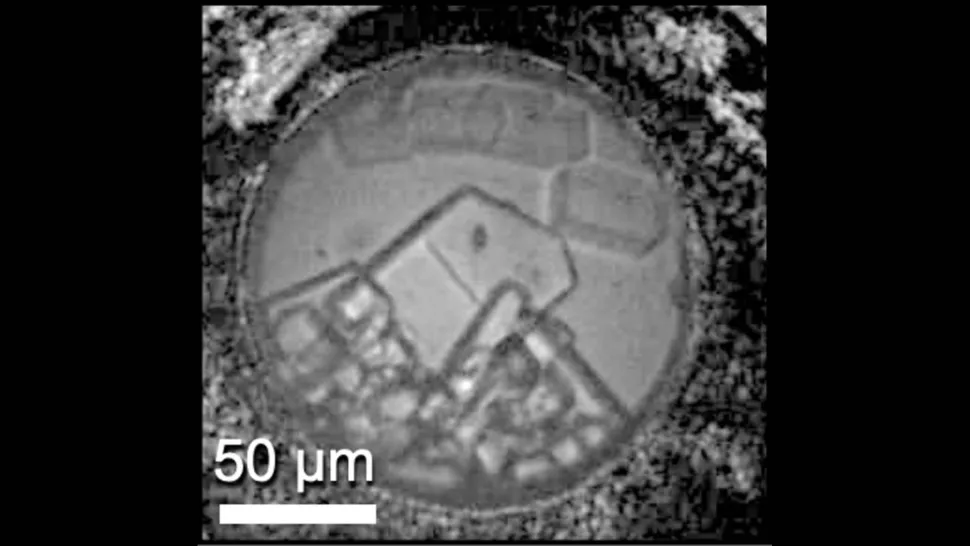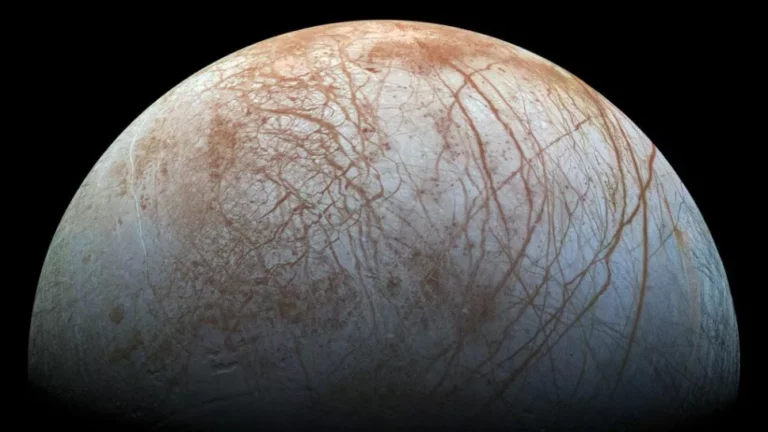The discovery of a new type of salt may provide an explanation for the mysterious cracks found in the ice of Europa.
The discovery could explain the red streaks across Jupiter’s moon Europa that match no known substance on Earth.
A team of scientists from the University of Washington has identified two new types of solid crystals that can form when table salt and water combine under low pressures and cold temperatures. This discovery has important implications beyond Earth, as these salts may exist in cracks and crevices on the surfaces of moons throughout our solar system.

The discovery of these salts could provide a long-awaited explanation for the mysterious red streaks on Jupiter’s moon Europa. These lines have a unique chemical signature that cannot be found on Earth, but scientists suspect they are made of a frozen mixture of water and salts.
The researchers behind the discovery speculate that these newly identified substances, which are composed of two of the most common molecules on Earth, could naturally form at the bottom of deep oceans on moons like Europa.
“It’s rare nowadays to have fundamental discoveries in science,” lead author and University of Washington acting assistant professor of Earth and space sciences, Baptiste Journaux, said in a statement . “Salt and water are very well known in Earth conditions. But beyond that, we’re totally in the dark. And now we have these planetary objects that probably have compounds that are very familiar to us but in very exotic conditions.”
When water and salts mix at cold temperatures, they create a solid structure called a “hydrate” that is held together by hydrogen bonds. Until recently, sodium chloride, or table salt, was the only known hydrate, with a basic structure of one salt molecule for every two water molecules.
However, scientists have now discovered two new hydrates that are very different from sodium chloride. These compounds have been created by combining two sodium chloride molecules with 17 water molecules and one sodium chloride molecule with 13 water molecules, respectively.
If these high-water hydrates are found across Europa, it could explain why this Jovian moon’s surface and that of others have been found to be more watery than expected. “It has the structure that planetary scientists have been waiting for,” Journaux said.

While subjecting a small sample of salt water to extreme pressure, as much as 25,000 times the normal atmospheric pressure on Earth, a team of researchers discovered the new hydrates. They conducted the experiment by compressing the sample between microscopic diamonds no larger than a grain of sand. As the diamonds were transparent, the team could observe the experiment’s progress through a microscope. The researchers found that one of the hydrate structures remained stable even after the pressure was released.
“We were trying to measure how adding salt would change the amount of ice we could get since salt acts as an antifreeze,” Journaux said. “Surprisingly, when we put the pressure on, what we saw is that these crystals that we were not expecting started growing. It was a very serendipitous discovery.”
The extreme cold and high-pressure conditions that the scientists generated in the laboratory are not typical on Earth, but they exist naturally on Jupiter’s moons. These conditions are enough to create ice sheets that are 3 to 6 miles (5 to 10 kilometers) thick over oceans that are up to a hundred miles deep. In addition, even denser ice could potentially form at the bottom of these oceans.
“Pressure just gets the molecules closer together, so their interaction changes — that is the main engine for diversity in the crystal structures we found,” Journaux said.
The team’s next step is to create a larger sample of their newly discovered hydrates to conduct a more comprehensive analysis and determine if their chemical structures match the signatures found on icy moons. They will receive assistance from two upcoming missions, one exploring Saturn’s largest moon Titan, and two missions to explore the moons of Jupiter, namely the European Space Agency’s Jupiter Icy Moons Explorer mission (JUICE) and NASA’s Europa Clipper mission. These missions, scheduled for launch between 2023 and 2027, have the primary objective of investigating whether these moons possess the necessary chemistry to sustain life.
“These are the only planetary bodies, other than Earth, where liquid water is stable at geological timescales, which is crucial for the emergence and development of life,” Journaux said. “They are, in my opinion, the best place in our solar system to discover extraterrestrial life, so we need to study their exotic oceans and interiors to better understand how they formed, evolved, and can retain liquid water in cold regions of the solar system, so far away from the sun.”
The discovery of these new types of salty ices with unique hydrate structures has implications beyond planetary science. They could also benefit energy research as hydrates can be utilized for energy storage.
“We have to redo all the fundamental mineralogical science that people did in the 1800s but at high pressure and low temperature,” concluded Journaux. “It is an exciting time.”
The team’s research is published in the Feb. 20 edition of the Proceedings of the National Academy of Sciences.
Do not forget to share your opinion with us to provide you with the best posts !




I am really impressed along with your writing skills and also with the layout on your blog.
Is this a paid topic or did you modify it yourself?
Either way keep up the nice quality writing, it’s uncommon to
see great weblog like this one nowadays..